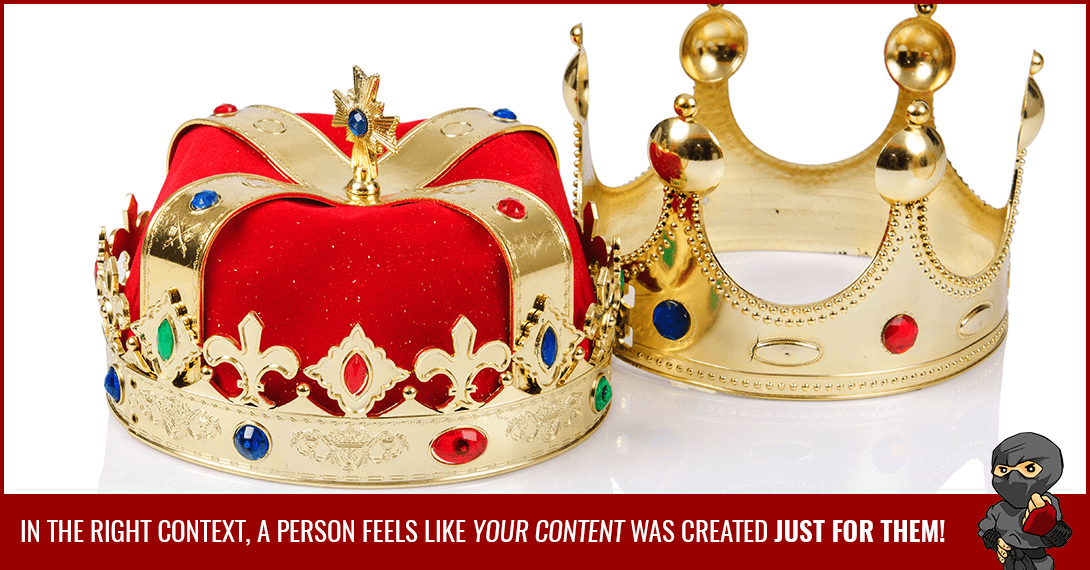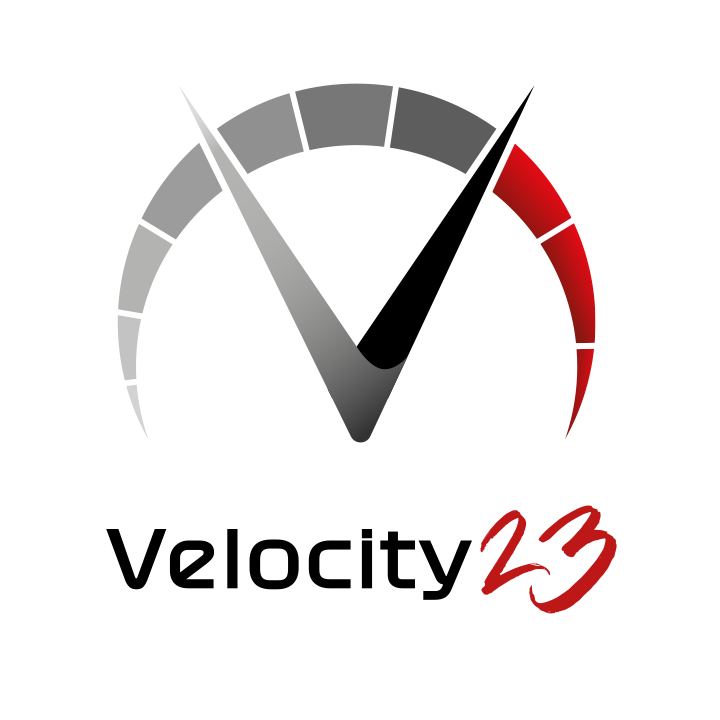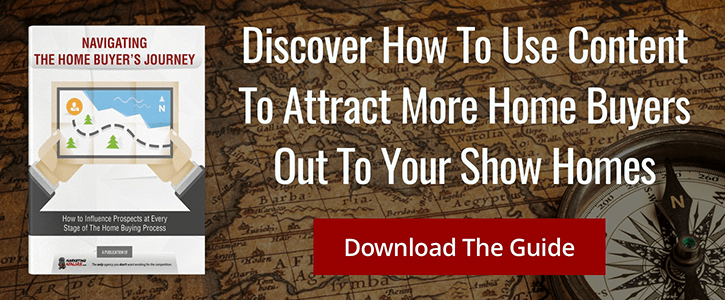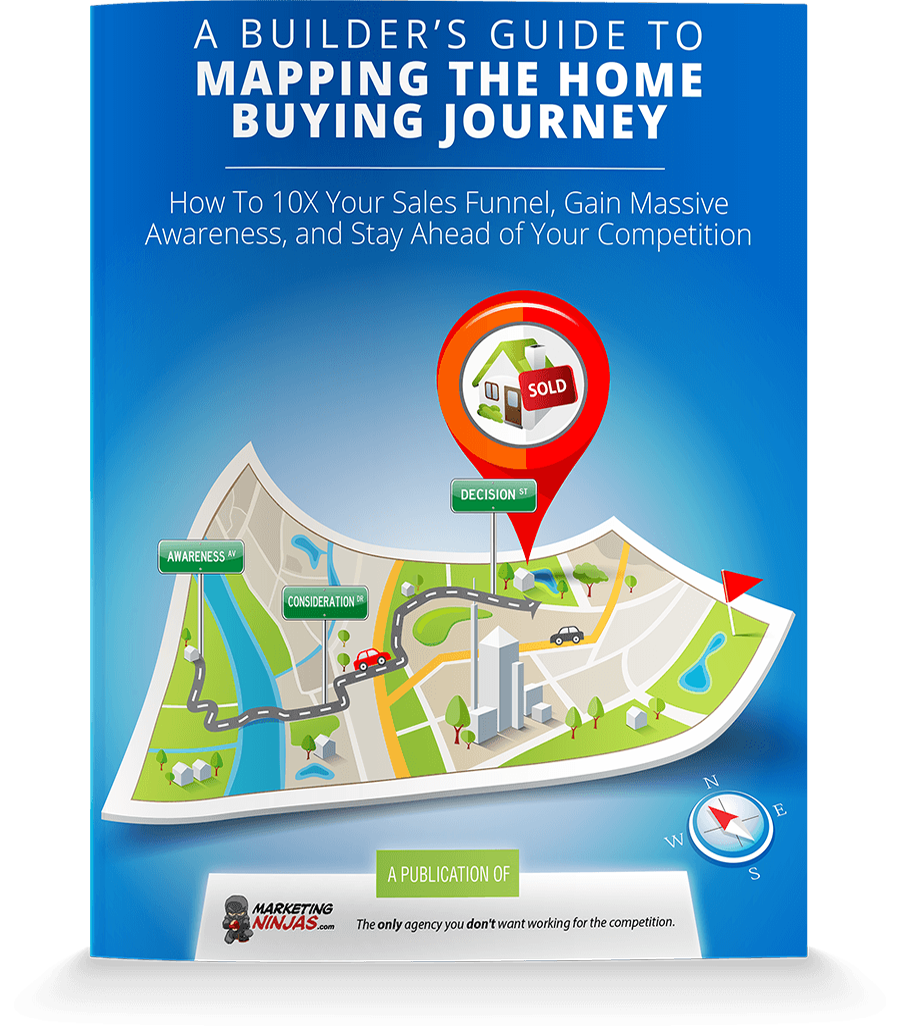With the digital shift came the rise of content marketing – a term you’re most likely familiar with. Content marketing, at its core, is a strategy focused on distributing valuable and relevant content to a very specific audience. The goal, through content, is to attract the attention of prospective customers, engage with them, and finally close the sale loop.
This is pretty straightforward. But more and more we’re seeing the need to expand upon this framework in order to discover exactly how to distribute content most effectively.
I’d like you to first consider the following passage from William Golding’s Lord of the Flies:
“While stranded on a deserted island, a group of boys believe there is a dangerous creature lurking in the underbrush; Simon is the first to identify this menace, suggesting to the boys that ‘maybe,’ he said hesitantly, ‘maybe there is a beast’.”
This excerpt gives you some direct information about the subjects – a group of young boys who are fearful – but it also does a really great job of providing you with more comprehensive meaning.
It gives you context.
 What is Context?
What is Context?
In literary terms, context is the framework to describe the circumstances, environment, background, and setting surrounding a particular narrative. In the example above, we can easily understand that the group of boys have developed a sense of danger, but since Golding highlights that the group of boys are stranded on a deserted island, we can better understand why this fear has developed.
So what does this have to do with marketing?
Continuing to relate to the example above, you can see the value of context if, hypothetically, you were to market to this group of boys. You know the surrounding circumstances that lead them to feel endangered, thus an offer of protection would be relevant to them. “How to Build a Beast-Proof Shelter” might be a blog post they’d be interested in.
Alright, perhaps we’re getting a little carried away here, but the main takeaway is that context matters a great deal – arguably even more than the actual content itself. Why is this?
Because we are who we are as a consequence of the context around us.
When trying to market the homes you build, this is extremely important to keep in mind. You should have an idea of your ideal customer prototype but if you fail to understand the context surrounding the customer’s home buying journey, your content will miss the mark every time.
Context shapes the content we want to read, the way we shop, and what we choose to buy.
We already know that delivering more relevant messages to prospects based on what we know about them improves the effectiveness of marketing. And if you’ve been using content marketing, you’re sure to have noticed it’s best to provide value, provide more value, and then provide even more value, before ever asking for a sale.
The internet has provided a perfect platform for content distribution, but the vastness of it means there’s an overwhelming amount of content for people to consume. Therefore, we know that no matter how good a piece of content may be, it has to be attention-grabbing to have any impact.
This leaves us with one fundamental question:
How do we deliver the right content, to the right people, at the right time?

Your Buyer Personas
Let’s start by refreshing our memories about the importance of buyer personas.
A buyer persona is a “character” you develop to represent your ideal customer. While this description is fictional, it must also be realistic. Therefore, to develop a buyer persona, you must research personal information and monitor your prospects’ behaviour. By conducting interviews and surveys, engaging prospects on social media, and asking for feedback, you can start to build an accurate profile. The main things you’ll want to know about your buyer persona are:
- Career and demographic information
- What a typical day in their life is like
- What their challenges and pain points are
- What questions they're asking and where they search for their information
- Common objections (also called "pushbacks") to purchasing from you
When you know what job they do, where they spend time on the internet, and what type of content they prefer, you can use that information to create extremely relevant, targeted, and personalized content. As a prospect continues down your marketing funnel, you can seek out more and more detailed information that will further help you improve your content.
Ultimately, though, knowing who your customer is, isn’t enough. You need to understand why they are who they are.
You may have developed a buyer persona that can be generally ascribed to a group of similar individuals. However, context will vary greatly per individual.
 For example, take two prospects who are in the same age range and work in the same industry. They are both looking for a new home in the NW area of the city. But Prospect A needs to move because they are getting remarried, while Prospect B needs to move because they want a shorter commute to work.
For example, take two prospects who are in the same age range and work in the same industry. They are both looking for a new home in the NW area of the city. But Prospect A needs to move because they are getting remarried, while Prospect B needs to move because they want a shorter commute to work.
Thus, their motives to buy differ – this is context.
We can see how vital it is to be aware of this because, in order to captivate the attention of these individuals, you’ll need to market to each of them very differently.
Not only does context distinguish individuals, it plays a significant role throughout the buyer’s entire journey to purchase a new home.
How Does the Home Buyer’s Journey Work?
Remember that we are trying to solve the question, “How do we deliver the right content, to the right people, at the right time?”
We’ve identified that the “right people” are discovered through research and analytics to develop and maintain strong buyer personas. We are then able to create content that speaks directly to these personas. But this doesn’t exactly tell us what type of content is right for them at any given time. A critical practice will be to map content to your buyer personas and where they are in their home buyer’s journey.
 The Buyer’s Journey follows three distinct stages: Awareness, Consideration, and Decision. You may be familiar with this. But it’s important to note that context changes stage by stage and, as a result, your content and distribution methods should change as well.
The Buyer’s Journey follows three distinct stages: Awareness, Consideration, and Decision. You may be familiar with this. But it’s important to note that context changes stage by stage and, as a result, your content and distribution methods should change as well.
1. Awareness
During this stage, a prospect is just beginning to become aware of a problem or opportunity they have. They’re taking notice of their “symptoms” and want to figure out what they can do about it. Let’s use a prospect we’ll call Paula for an example scenario. Paula has recognized her current home is too small, as she’s expecting a new baby. This gives you a basic idea of context during this particular stage.
What does your prospect need during the awareness stage?
Information. Education. At this point, they will only be doing research to give a name to their problem, and dipping their toes into the pool of what’s out there.
By understanding the context, you’ll quickly realize that a prospect in this stage isn’t nearly ready to download a “builder comparison spreadsheet” – they aren’t going to decide to work with a specific builder anytime soon. Content that compares the pros and cons of resale homes versus new home builds would be something general enough to provide valuable information without being too specific to your company. Context helps you to understand what they do need AND why they need it.
2. Consideration
After researching, Paula moves into the consideration stage as she now has a clearly defined problem. At this stage, Paula is seeking to understand all the available approaches and/or solutions to her problem. She wants to know her options for a new home. You can begin to get a little more specific, but you still want to avoid promoting yourself as no decision to build has been made yet.
A blog post such as, “Floor Plan Features Your Growing Family Needs” is something Paula might click on. A call-to-action on this post to get downloadable content such as, “How to Move Up to a Bigger and Better Home” fits here because it provides additional value in relation to both the person and her particular circumstance.
3. Decision
Finally, Paula has decided on a solution to her problem – she wants to build a brand new home. Still, she has not yet figured out exactly how to do this. Paula will be searching for things like communities and available builders in her chosen area so she can narrow down that list and eventually make a purchase decision.
Keep in mind that if you’ve been a consistently helpful resource providing value to this prospect along her journey, you’re much more likely to make the short list. After all, you’ve remained front-of-mind with Paula throughout her journey, without turning her off by being too “sales-y”. You’ve begun to develop some rapport and built up a strong sense of trust, which benefits you when it comes time to make a sale.
In short, you've created and cultivated a relationship with Paula.
Developing Relationships
It may be useful to remember that a prospects “title” changes along their journey: they start off as strangers in the awareness stage, become visitors in the consideration stage, leads in the decision stage and, potentially, customers.
Think of the etiquette of meeting someone new; the way you interact with a stranger would be different than how you’d interact with a well-known friend. When you consider the context of your interaction with a person at each stage of their journey and adjust your approach accordingly, you’re better able to build rapport. The end result is customers turning into promoters of your trusted brand.
Context in Practice
We can now see that context not only changes per individual, it also changes over time. So, again, how can we position content in a way that provides the most value for our audience at any given time?
Let’s revisit the importance of understanding motives. This is central to applying context marketing. Following the pattern of listening, analyzing, and acting, we can begin to put this into practice. That is, the practice of knowing your audience so well that you can determine exactly what they need and when they need it, allowing you to provide useful, helpful, and valuable content every time.
Step 1: Listening
This is similar to developing your buyer personas in the first place; researching, surveying, and interviewing to compile information about your target audience.
But the ability to recognize context goes beyond this.
For example, actively engaging with your prospects on social media is a useful tool for developing a deeper understanding of the "why" behind the actions of your prospects. Create an open dialogue to listen to their needs, before assuming you know what’s best for them.
Step 2: Analyzing
The next step is analyzing; it involves tracking behavioural data and using tools like web data analytics of how visitors are interacting with your site to determine which stage of the buyer’s journey they’re in.
Lead intelligence is another tool that can help you track and figure out which channel, platform, or marketing campaign first brought a visitor to your site. Through this, you can make educated inferences about a prospect’s initial interests and intention behind their behaviour and actions.
Step 3: Acting
Lastly, it’s time to act. When approaching a lead either through direct contact or the promotion of content, be intentional with it. You want to contact them at a time where it’s not perceived to be an inconvenience to them. Try taking a look at their history on your site, what they’ve downloaded, and maybe even look at their social media profiles to try and understand what their unique needs may be.
As you follow up with a prospect along their journey, giving them a personalized experience also means you’re able to “continue where you left off.” If you’re approaching the same prospect with questions you’ve already asked them or presenting them with content they’ve already seen, they won’t feel that sense of rapport with you. Having context takes you from pushy salesperson to helpful friend.
From Prospects to Friends
Context is your ticket to reaching the goal of creating a personalized experience for your prospects. This involves more than just targeted messages, it’s about building a relationship with prospects as they travel along their buyer’s journey. By identifying with your prospects through an understanding of context, you’ll be able to emotionally connect with them in meaningful ways – this is the foundation of trust that will help you close the sale loop.
So when you’re creating content, shift away from the idea that it should have the effect of bringing customers to you. Instead, think of your buyer persona and context – find out where they are, then meet them there.








